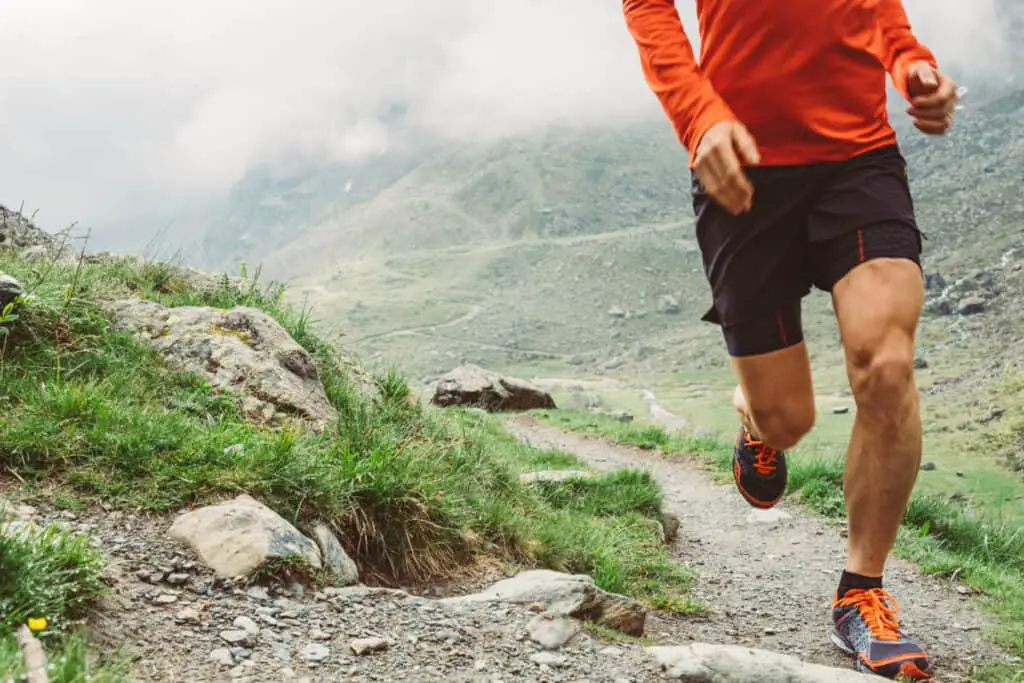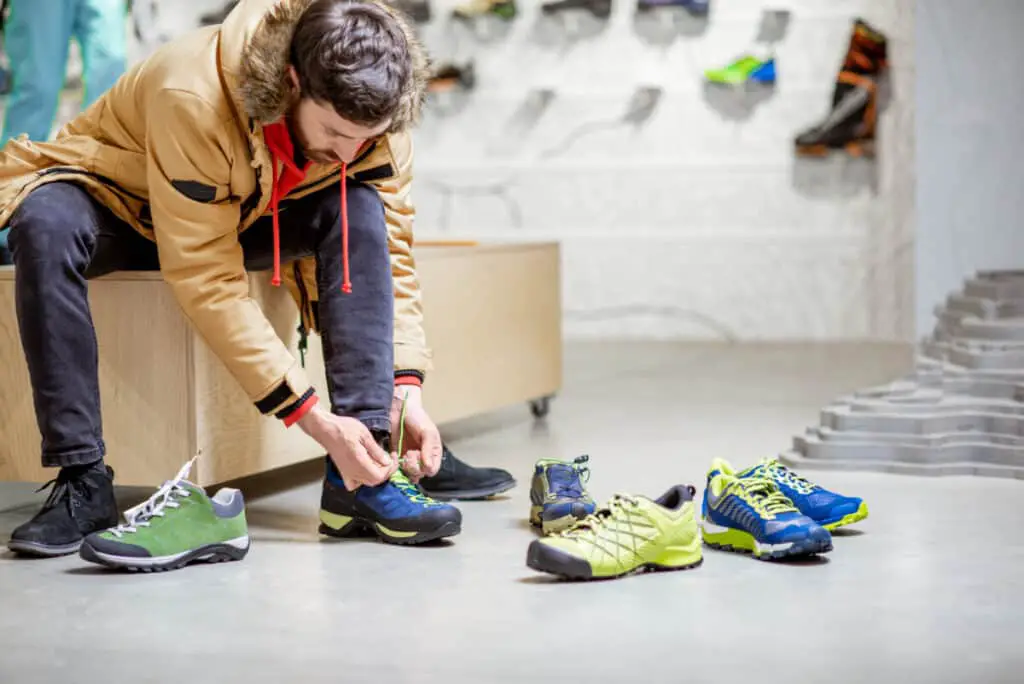
Whether you are a beginner or a seasoned trail runner, picking the best shoe is vital to succeeding in trail running. A good shoe will keep you safe and provide a better experience.
To choose the best OCR and trail running shoes, look at the tread, provided foot support, and built-in protection provided for one’s feet. Quality OCR and trail running shoes have thick tread, provide stability on uneven surfaces, and support the arches of the wearer’s feet.
There are many different types of trail running shoes and obstacle course racing shoes for your use. To find out more about what kind of trail running shoe is for you, read below.
What Type of Trail Running or OCR Shoe Works for You?
When choosing the best trail running or OCR shoe, you first need to find out what type of trail runner you are. There are a variety of shoes for runners with different abilities, going different distances, and running in different environments. Use these three areas of criteria to improve your trail running experience.
Those new to trail running or who run on relatively easy terrain should choose a lightweight trail running shoe. Beginners should also avoid purchasing their first pair of trail shoes online. We recommend trying a pair of trail shoes on (specifically the ones you’re interested in) before making a purchase.
Trying the shoes on beforehand ensures that you get the right size without pesky returns. This also gives you the chance to learn how trail shoes differ from your regular running shoes.
More experienced runners should look for trail running shoes that will help improve their performance. This means shoes with built-in protection and great support. Shoes with these characteristics allow for longer training hours.
Competitive trail runners need a specific shoe. A competitive trail runner is someone who intensely trains for trail running competitions. They need shoes that won’t slow them down so they can be at the front of the pack. Featherweight shoes are extremely lightweight shoes designed for competitive trail running. These technical shoes are made for performance and precision.
The distance you run will also factor into your choice of shoe. Short-distance running is usually less than or up to 15 km, mid-distance running is typically 25-50 km, and long-distance is lengths 50 km or longer. For shorter distances, look for lightweight and responsive shoes. For mid-distances, an all-around shoe (lightweight, but protective) is the best choice. If you run significantly long distances, you will need a shoe with substantial cushioning. This will give you the comfort that you need to complete long-distance runs.
How Trail Running Shoes and OCR Shoes Should Fit
When trying on trail running shoes, pay attention to how comfortable they are. If a pair of trail running shoes rubs or pinches your feet, then they are not a good fit. No matter how tempting the price tag may be, it is not worth the discomfort and potential injuries. A poor-fitting shoe won’t allow you to enjoy trail running as much as you would if you purchased the perfect fitting shoe.
When determining your shoe size, we recommend that you try on trail running shoes at the end of the day. By the end of the day, your feet are the most swollen. This simulates how they would be during a run. There should be about a 1 cm gap between your toe and the end of the shoe. This distance will prevent blisters on your toes and bruised toenails. These toe injuries are very common among trail runners because the terrain can be so harsh on their feet. A good fitting shoe will prevent these types of injuries from happening and limit the pain your feet experience on a trail run.
The Tread of a Good Trail Running Shoe
The tread of a trail running shoe is something to consider when choosing the right pair. The tread of the shoe is occasionally referred to as the lug. Shoes with different treads have different specialties. The deeper the tread or cleats of a shoe, the better traction your shoe will have. Good traction is especially important when running in slick terrains, such as mud and snow. A shorter tread is ideal for hard-packed and dry trails. Shoes with shorter traction are often lighter and are, therefore, better for runners seeking speed and efficiency while running.
The terrain you are running on will determine the type of shoe you purchase. When running on unstable or muddy terrain, a shoe with a more aggressive tread is recommended. A more aggressive tread stops mud from getting stuck in the bottom of the shoe.

When running on unstable surfaces, balance is a necessity. If you frequently run on unstable surfaces or surfaces slick with mud, choose a shoe that has a well-supported instep and deep lugs.
If you run on mostly rocky, rough terrain, the best shoe for you will have a stiffer outsole. A stiff outsole will provide you with stability and protection from the harshness of the stones you are running on.
Most trail runners, especially beginners, want a very versatile shoe. Those who like to change the terrain type they run on need a lightweight, flexible shoe. If this applies to you, you will need a shoe with shorter, closely spaced lugs. Shorter, closer spaced lugs will provide you with a good grip on most running surfaces. A thinner outsole is also recommended for trail runners that run on a variety of terrains. A thinner outsole will make the shoe lighter and flexible.
Snow and ice is a type of terrain that requires a specific tread. Running in the snow and on icy surfaces can be more dangerous than other types of terrain because it is so much easier to fall. Trail running in the winter requires shoes with very good tread. These shoes need very deep lugs and metal studs on the bottom. A winter shoe will also have to withstand extreme temperatures. Look for shoes with integrated gaiters and a waterproof membrane. These qualities will ensure that your feet stay warm and dry.

